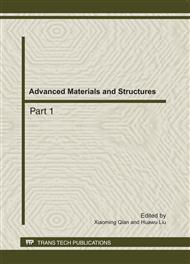p.845
p.851
p.856
p.863
p.869
p.873
p.881
p.886
p.891
The Analysis of Dynamic Viscoelastic Properties of Regenerated Cellulose at Different Temperature and Humidity
Abstract:
The effects of temperature and relative humidity on regenerated cellulose had been investigated in detail in the present work. From experimental results, it was shown that with increasing of RH within temperature range of 35~65°C, storage modulus Er decreased, loss tangent tanδ increased. This indicated that water molecules penetrate into cellulose and mask off inter- and intra-chain hydrogen bonds and make some motion units to move. More importantly, experimental results indicated that three regenerated cellulose samples had different microstructure and superstructure, which greatly affects the properties of regenerated cellulose. So it will be very valuable to further study the effect.
Info:
Periodical:
Pages:
869-872
Citation:
Online since:
September 2011
Authors:
Price:
Сopyright:
© 2011 Trans Tech Publications Ltd. All Rights Reserved
Share:
Citation:


